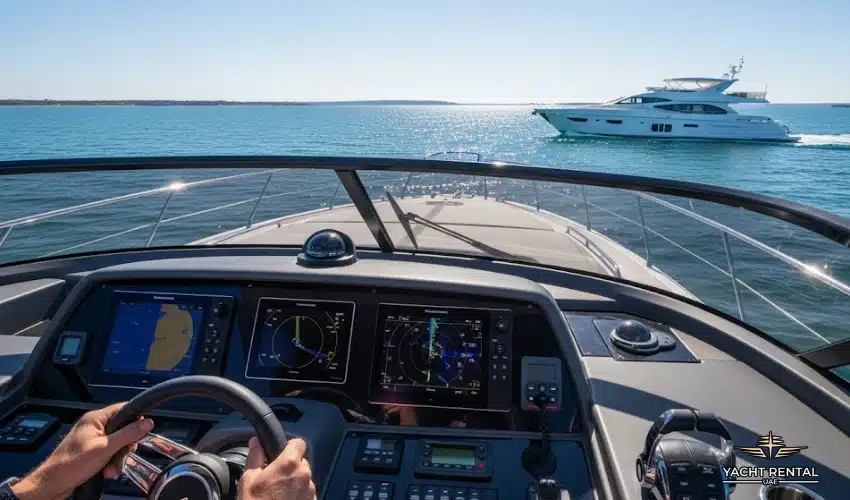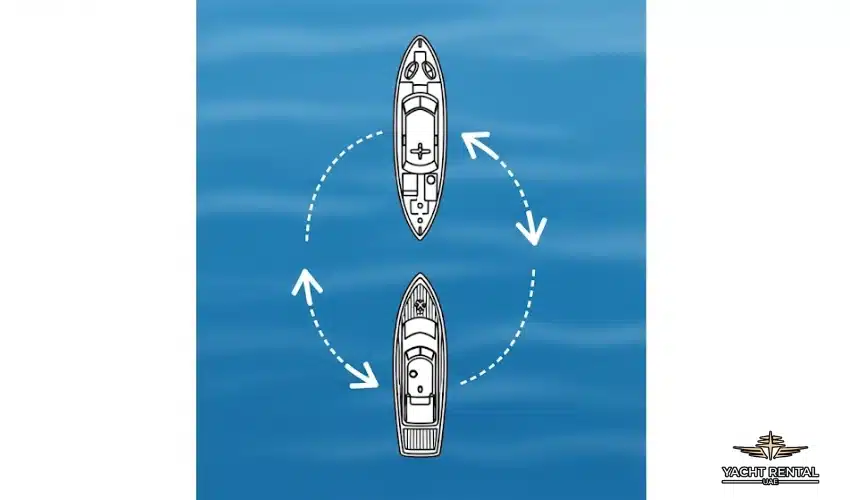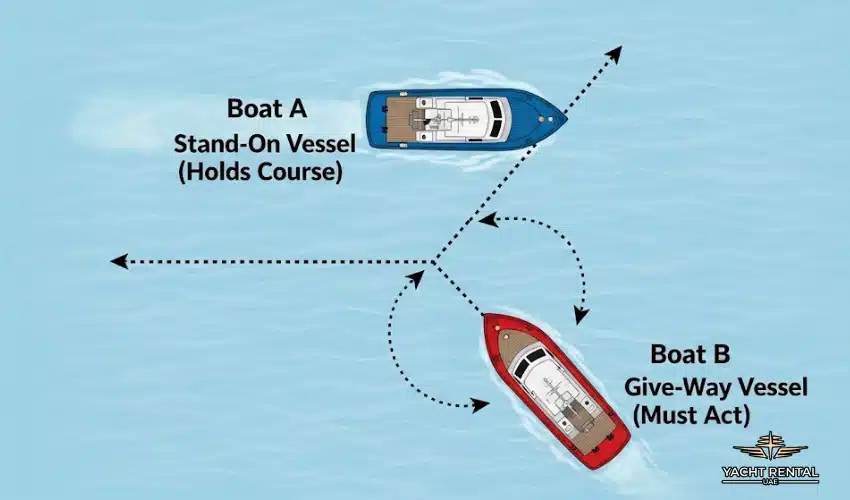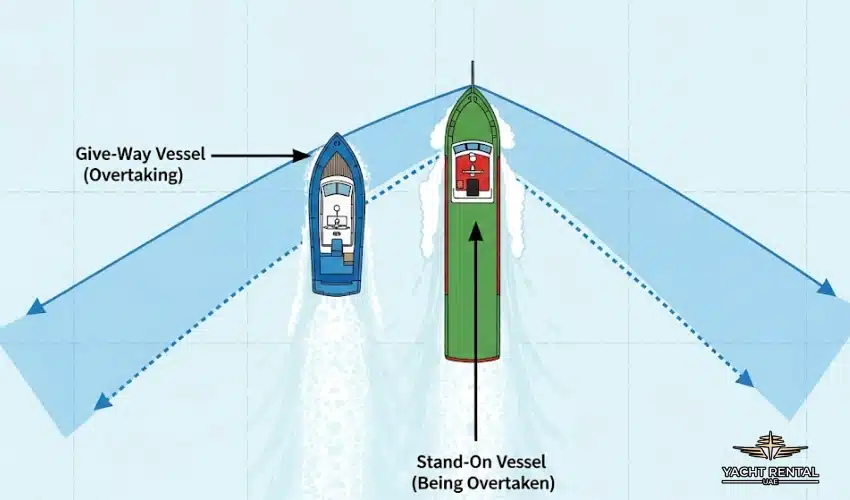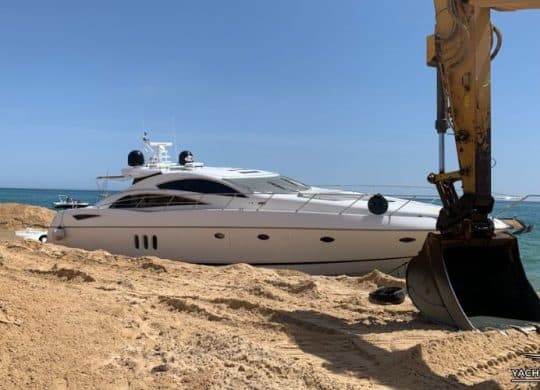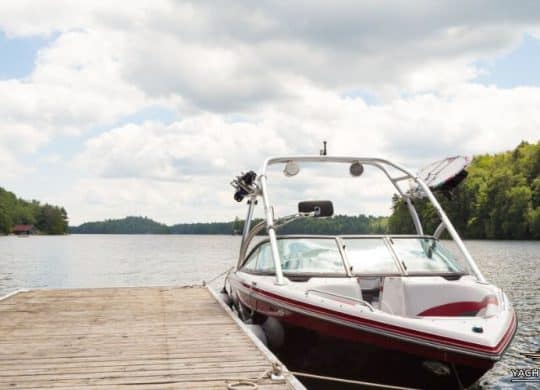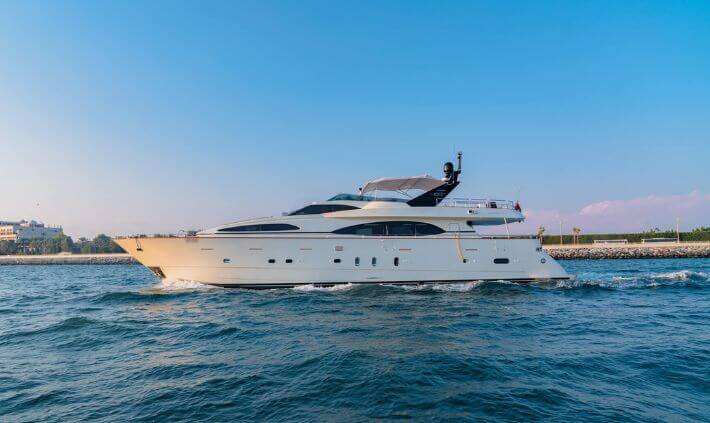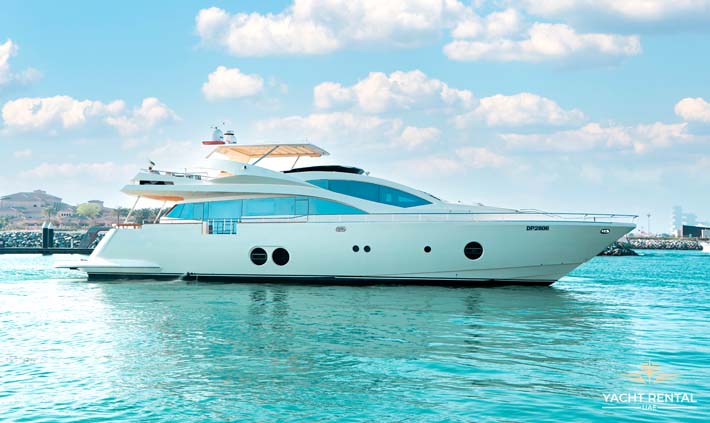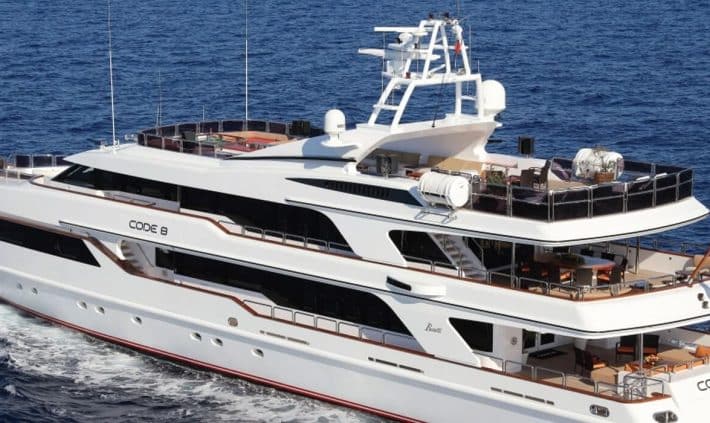The Three Pillars of Collision Avoidance
Every boat operator must practice three core safety principles at all times. These are not suggestions; they are the foundation of safe boating.
1. Maintain a Proper Lookout
Your eyes and ears are your best safety tools. A proper lookout is an active, 360-degree watch around your boat. The boat’s operator or a designated lookout must constantly scan for other vessels, navigation aids, debris, and people in the water. Look in all directions, including behind you, before you make any turn. Distractions like mobile phones or loud music can lead to accidents.
2. Maintain a Safe Speed
A “safe speed” changes with the conditions. You must always be able to stop your vessel in time to prevent a collision. Reduce your speed in congested areas, during bad weather, or when visibility is limited due to fog, rain, or sun glare. High traffic or the presence of docks and other structures also requires a slower, more cautious speed.
3. Take Early and Obvious Action
When you see a potential for a collision, act immediately. Small, last-minute changes in your course or speed can confuse other boat operators. Make your maneuvers obvious and do them early enough for the other boat to clearly see your intentions. A large, deliberate turn is much safer than a series of small adjustments. If you are ever in doubt, slow down or stop your boat.
Know the Basic “Rules of the Road”
The nautical Rules of the Road are navigation laws that tell boaters how to act when they meet another vessel. Knowing these rules is a legal requirement. In any situation, one boat is the “give-way” vessel and the other is the “stand-on” vessel.
- Give-Way Vessel: This boat must take early and substantial action to keep well clear of the other vessel. It might mean stopping, slowing down, or changing course.
- Stand-On Vessel: This boat should maintain its course and speed. However, it must also stay alert and be prepared to act if the give-way vessel does not.
The Boating Hierarchy
As a general rule, more maneuverable boats must give way to less maneuverable ones. A powerboat, for instance, must typically give way to a sailboat. All vessels must stay clear of large ships that are restricted to a channel.
Head-On Situation
When two powerboats are approaching each other head-on, both boats are give-way vessels. Both operators must turn to starboard (right) and pass each other on the port (left) side.
Crossing Situation
When two powerboats are crossing paths, the situation is different. The boat on the operator’s right side is the stand-on vessel and has the right-of-way. The boat on the left is the give-way vessel and must alter its course to pass behind the stand-on vessel. A good way to remember this is if you see a boat’s green light (starboard side) at night, you can proceed. If you see its red light (port side), you must give way.
Overtaking Situation
Any boat that is overtaking another boat is the give-way vessel. You must keep well clear of the vessel you are passing. You can overtake on either side, but you are responsible for avoiding a collision. The boat being overtaken is the stand-on vessel and should maintain its speed and course.
How to Handle Special Conditions?
Here are a few special conditions or circumstances in which you must avoid colliding with another boat.
Night and Poor Visibility
Operating a boat at night or in fog requires extra caution. Your boat must have proper navigation lights on from sunset to sunrise. These lights show other boaters your position and direction of travel.
- A green light marks your starboard (right) side.
- A red light marks your port (left) side.
- A white light marks your stern (rear).
Slow down significantly in poor visibility and use your horn to signal your presence if needed.
Near Large Ships
Never assume the operator of a large ship can see your small boat. Stay clear of shipping lanes. Large vessels like cargo ships and tankers move faster than they appear and cannot stop or turn quickly. Always pass well behind them and never cut across their bow.
What to Do If a Collision is About to Happen
If you have done everything you can and a collision is still imminent, your last-second actions can make a difference.
- Sound the Danger Signal: Immediately sound five or more short, rapid blasts with your boat’s horn. This alerts everyone nearby of the immediate danger.
- Warn Your Passengers: Yell loudly for everyone on board to brace for impact. Tell them to hold on to something secure.
- Maneuver to Minimize Damage: If possible, try to turn your boat to take a glancing blow rather than a direct head-on or 90-degree impact. This can sometimes reduce the severity of the damage and potential for injury.
Frequently Asked Questions (FAQs)
Which boat has the right of way?
The “stand-on” vessel has the right of way and should maintain its course and speed. The “give-way” vessel must move to avoid a collision. In a crossing situation, the boat on the right is the stand-on vessel.
What is the boat danger signal?
The boat danger signal is five or more short, rapid blasts of the boat’s horn. It communicates immediate danger or that you do not understand the other boater’s intentions.
What does it mean to be a “stand-on” vessel?
Being the stand-on vessel means you have the right-of-way and should maintain your current course and speed. However, you must remain vigilant and be ready to move if the other boat fails to give way.
How do you overtake another boat safely?
The boat doing the overtaking is always the give-way vessel. You must keep a safe distance from the boat you are passing. You may pass on either side but must announce your intention with the proper horn signal if necessary.
Should you slow down or turn to avoid a collision?
As the give-way vessel, you should take early and obvious action, which can be slowing down, stopping, or making a significant turn (usually to starboard). Turning to pass behind the other vessel is often the safest maneuver.
How do you avoid large ships?
Stay out of marked shipping channels whenever possible. If you must cross, do so at a 90-degree angle and behind the ship. Never get close to the front or sides of a large vessel, as they have large blind spots and cannot maneuver to avoid you.
Who has the right of way between a powerboat and a sailboat?
Typically, a powerboat is the give-way vessel and must keep clear of a sailboat that is under sail. However, if the sailboat is using its engine, it is considered a power-driven vessel.

